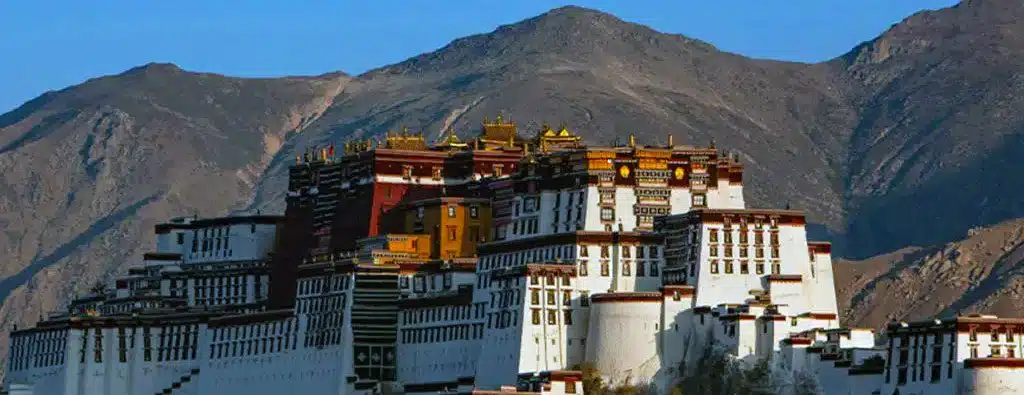Although technically an autonomous region of China, Tibet has been recognized by the United Nations Educational, Scientific and Cultural Organization (UNESCO) as home to three World Heritage Sites. All of which may be found in the capital city of Lhasa—plus one Tentative listing, the Yalong region, which is the cradle of Tibetan culture. The three places within Lhasa are each highlights of any Tibet cultural itinerary offering unique vantages of the beauty, history, architecture and culture of this stunning land.

Potala Palace
Lhasa’s iconic palace was originally built in the 7th century, and then developed into the grand, sprawling complex that was home to the Dalai Lamas between the 17th and mid-20th century. One of the highest altitude palaces in the world, it sits atop on Marpo Ri (“Red Hill”) overlooking Lhasa. Comprised of more than 1,000 rooms, in contains 698 murals, almost 10,000 painted scrolls, numerous sculptures, carpets, canopies, curtains, porcelain, jade, and fine objects of gold and silver, as well as a large collection of sutras and important historical documents. It is truly a treasure trove of Tibetan Buddhism.

Norbulingka
Built by the 7th Dalai Lama, the complex totals four palaces, a monastery, and numerous halls and pavilions over 36 hectares. The summer palace of Dalai Lamas, it is surrounded by gardens considered the finest of their kind in the whole of Tibet. The buildings are a unique example of Tibetan palace architecture. Its architecture and houses relics reflect religious and ethnic aspects of the Tibetan, Han Chinese, and other tribes of the region.

Jokhang Temple
The holiest temple in Tibet, Jokhang is run by the Gelug school of Buddhism yet it is open to worshippers from all sects of Buddhism. The oldest parts of the building date from 652, but the complex has been renovated and added onto throughout the centuries. The outside of the temple is adorned with the early representations of Buddhism such as deer and wheel motifs, while the interior presents a maze of chapels devoted to different gods and bodhisattvas and a significant collection of cultural artifacts. Housed at the heart of Jokhang is the holiest object in Tibet: a life-size bejeweled statue of Jowo Shakyamuni, wife of the king who commissioned the temple’s construction. Its golden roof beautifully blends elements of Tibetan, Nepalese, Chinese, and Indian influences.
Yalong
On UNESCO’s tentative list, the Yalong region is the cradle of Tibetan culture. An area of 1350 square kilometers, it entails the valley of the middle reach of Yaluzangbu River and several lakes on the Tibetan Plateau. Many hot springs, waterfalls and karst caves can also be found here. The region’s ancient sites include relics and artifacts representing the early civilization of the Tibetans–their early religion, culture, arts and society. These sites include the Changguo Ruins, remains of a primitive village from the Neolithic Age, as well as the first palace in the history of Tibet: Yongbulakang Palace, built in the 2nd century BC on the top of the Zhaxiciri Mountain. It is from these lands that the early Tibetan characters, poems, operas, medicine, astronomy, and calendars originated.

